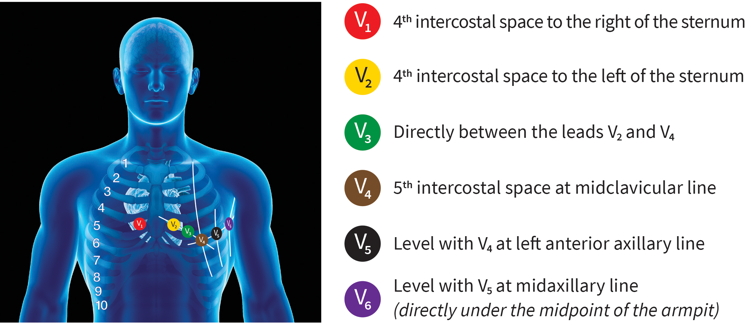The human heart is an intricate organ, beating rhythmically to sustain life. While we often think of the heart as having a steady, unchanging beat, variations in its rhythm can tell us much about our health. One such variation is sinus arrhythmia. Understanding sinus arrhythmia and its implications can provide valuable insights into your heart health, helping you navigate potential concerns and maintain overall well-being. In this blog post, we’ll explore what sinus arrhythmia is, debunk common myths, and explain its significance in daily life.

What Is Sinus Arrhythmia?
Sinus arrhythmia refers to the natural variation in heart rate that occurs during a normal breathing cycle. Unlike many arrhythmias, sinus arrhythmia is usually benign and occurs as part of the body’s normal physiological process. The term “sinus” refers to the sinoatrial (SA) node, the heart’s natural pacemaker, which regulates your heart’s rhythm. The “arrhythmia” aspect simply refers to the irregularity in this rhythm, most often linked to breathing patterns.
When you inhale, your heart rate tends to speed up slightly, and when you exhale, it slows down. This respiratory-related heart rate variability is most common in children and young adults and generally diminishes with age. It is essential to note that while sinus arrhythmia sounds alarming due to the term “arrhythmia,” it does not typically indicate a heart condition that requires medical intervention.
Myth vs. Science of Sinus Arrhythmia
There are several misconceptions surrounding sinus arrhythmia, often leading to unnecessary anxiety. Some believe that any irregularity in heart rhythm indicates a dangerous heart condition. However, science tells us otherwise.
According to studies published in cardiology journals, sinus arrhythmia is not only harmless but can be an indicator of a healthy, adaptable heart, particularly in younger people. The variability in heart rate helps the cardiovascular system respond dynamically to changes in breathing and oxygen demand. While the condition becomes less pronounced with age, in most cases, sinus arrhythmia requires no treatment unless it’s accompanied by symptoms such as dizziness or fainting, which may indicate other underlying issues.
Sinus Arrhythmia in Daily Life
How does sinus arrhythmia impact daily life? For most, it doesn’t. People with sinus arrhythmia usually go about their lives without even noticing the condition, as it causes no discomfort or health problems. However, understanding your heart’s rhythm can still offer peace of mind and prevent unnecessary worry.
If you’ve been diagnosed with sinus arrhythmia, monitoring your overall heart health is still a good idea. You can incorporate habits like regular exercise, a balanced diet, and mindfulness techniques such as yoga or deep breathing exercises to ensure that your cardiovascular system stays in top shape. Additionally, periodic checkups with a healthcare provider can help track any changes over time.
Key Attributes of Sinus Arrhythmia
Sinus arrhythmia is typically categorized by its relationship to the breathing cycle. Below are its core attributes:
| Attribute | Description |
|---|---|
| Respiratory Sinus Arrhythmia | Occurs when the heart rate increases with inhalation and decreases with exhalation. It is most common in children and young adults. |
| Non-Respiratory Sinus Arrhythmia | Less common and not related to breathing patterns; may occur due to medications or other conditions. |
| Heart Rate Variability (HRV) | Sinus arrhythmia is a natural example of HRV, which indicates a flexible cardiovascular system. |
These categories highlight how sinus arrhythmia is linked to normal physiological functions and not necessarily a sign of heart trouble.
Strengths and Challenges of Sinus Arrhythmia
Understanding the strengths and challenges of sinus arrhythmia can help you make informed decisions about your health.
Strengths:
- Indicator of a Healthy Heart: In many cases, sinus arrhythmia reflects a healthy, responsive heart, especially in younger individuals.
- Heart Rate Variability: The fluctuation in heart rate shows that the cardiovascular system can adapt to different physiological conditions, which is a positive sign.
Challenges:
- Can Be Misinterpreted: Because the term “arrhythmia” is often associated with heart disease, people may worry unnecessarily when diagnosed with sinus arrhythmia.
- Reduced with Age: As we grow older, the heart becomes less responsive to breathing-induced variations, which may signal other changes in cardiovascular health over time.
If you have sinus arrhythmia, you can embrace the strengths it represents while being mindful of maintaining overall heart health as you age.
Practical Applications of Sinus Arrhythmia
For most people, sinus arrhythmia has no direct application in daily life beyond its role in natural heart rate variability. However, if you practice mindfulness, yoga, or any other form of breath-based exercise, you may notice the connection between your breathing and heart rate.
In fact, practicing deep breathing can enhance your awareness of your heart’s rhythm. Such techniques can also improve cardiovascular health by promoting relaxation and reducing stress levels, indirectly benefiting those with sinus arrhythmia. Here are a few practical tips for individuals with sinus arrhythmia:
- Deep Breathing Exercises: Engaging in controlled breathing exercises can help regulate your heart rate and improve overall relaxation.
- Mindfulness Meditation: This can enhance awareness of bodily sensations, including heart rate variability.
- Regular Health Checkups: While sinus arrhythmia is harmless, maintaining a close relationship with your healthcare provider can ensure your heart remains healthy.
Conclusion
Sinus arrhythmia, despite its complex-sounding name, is usually a sign of a healthy, adaptable heart. While the irregular rhythm may sound concerning, it’s generally nothing to worry about, especially if no symptoms accompany it. Understanding sinus arrhythmia can help you appreciate your heart’s natural rhythms and encourage a proactive approach to overall cardiovascular health.
If you’re curious about your heart health or simply want to explore how sinus arrhythmia fits into the bigger picture of well-being, consider speaking with a healthcare professional for personalized advice.
Remember, embracing the natural rhythms of your body, such as sinus arrhythmia, is one step toward leading a balanced and informed life.
